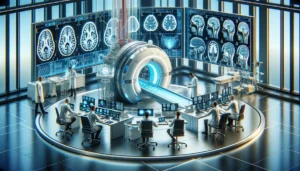Traumatic brain injury (TBI) occurs when an external force disrupts the normal functioning of the brain. The most common causes are falls, accidents, car crashes, assaults, etc. A period of loss of consciousness is common in moderate to severe traumatic brain injury. Symptoms of mild traumatic brain injury are temporary and usually fade away in a few days or weeks after the injury. However, moderate-to-severe injuries can cause coma, permanent brain damage, or even death.
Treatment of traumatic brain injury (TBI)
As traumatic brain injury is an emergency, it needs immediate medical attention. Traumatic brain injury treatment is based on the location, type, and severity of the injury.
- Mild traumatic brain injury treatment: Generally, mild injuries do not need treatment. In case of headache or pain, treatment comprises rest or over-the-counter pain relievers. However, it is necessary to closely monitor the patient at home for any worsening of the condition or persistent pain. Sometimes, it may seem mild at first, but the patient may develop new symptoms over time. Hence, it is important to see a specialist. The specialist will access, analyze, and help in the injury’s treatment. Most people return to routine activities gradually after the mild injury.
- Moderate to severe traumatic brain injury treatment: The first response treatment focuses on stabilizing the patients by maintaining adequate oxygen, blood pressure levels, and blood supply. The first response team aims to prevent any further injury to the neck and head. Once the patient is stable, the medical team addresses other types of care involved in the traumatic brain injury. Additional treatments are given to reduce secondary damage because of bleeding, swelling, inflammation, or reduced oxygen supply to the brain. Most times, surgery is needed as a part of immediate emergency care.
Surgery aids to minimize damage to the brain. It includes the following.
- Removal of blood clots: Traumatic brain injury causes bleeding in the brain or the area between the brain and skull. This leads to clotted blood or hematomas. The head areas with clotted or pooling blood add pressure on the brain and thereby damages brain tissues. Surgery helps to relieve this pressure and protects the brain.
- Repairing skull fractures: To start the healing process, it is necessary to set severe skull fractures. With the help of surgery, pieces of the skull or other debris are removed.
- Relieving intracranial pressure: The pressure inside the skull builds up from swelling, blood clots, and other things following traumatic brain injury. This can damage the brain and surrounding tissues. To relieve the intracranial pressure, to make space for the swollen tissue, and to drain the excess of fluid, sometimes a hole or window is created in the skull.
Medications: To reduce the risk of secondary damage and treat traumatic brain injury symptoms, medications are prescribed. Some medications are used immediately after the injury, while others help in the recovery. The medications used in traumatic brain injury treatment may include the following.
- Anti-anxiety agents: They help to reduce feelings of fear and nervousness.
- Anticoagulants: These agents help to prevent blood clots and improve blood circulation.
- Anticonvulsants: They are used to prevent seizures.
- Diuretics: Diuretics aids in the removal of accumulated fluid from the brain.
- Antidepressants: To treat symptoms of mood instability and depression, antidepressants are prescribed.
- Muscle relaxants: These agents help to decrease muscle spasms and aids in the relaxation of constricted muscles.
- Stimulants: Some patients may need to increase their alertness and attention following the injury. In such cases, stimulants are used.
- Coma-inducing drugs: As a comatose brain requires very little oxygen and nutrients to function, doctors may use coma-inducing drugs in some patients to induce temporary comas. These drugs are helpful if blood vessels in the head are compressed by increased pressure.
Rehabilitation: Rehabilitation therapies help patients to relearn skills, recover functions, and map out alternative paths to do things by taking new health status into account. It includes different kinds of therapy for not only physical but also emotional and cognitive difficulties. With rehabilitation therapies, patients are helped to carry out activities, like daily self-care, driving, etc.
Based on the injury, its location, type, and severity, such treatments are offered after the injury for a short duration or may be needed throughout a patient’s life. The goal of such therapies is to improve their skills and abilities to perform daily activities.
Rehabilitation specialists work closely with the patients and their loved ones. A Physiatrist oversees the entire rehabilitation process and prescribes medication if needed. Occupational therapy is a need for those who have suffered a severe traumatic injury. The specialist helps the patients to learn, relearn, or improve skills to perform daily routine activities.
The moderate to severe traumatic injury treatment involves relearning balance, movement patterns, and walking. For such patients, physical therapists are appointed. Some patients need speech and language pathologists to improve communication skills and may need to use assistive communication devices. Psychotherapy is needed for emotional and psychological well-being.






